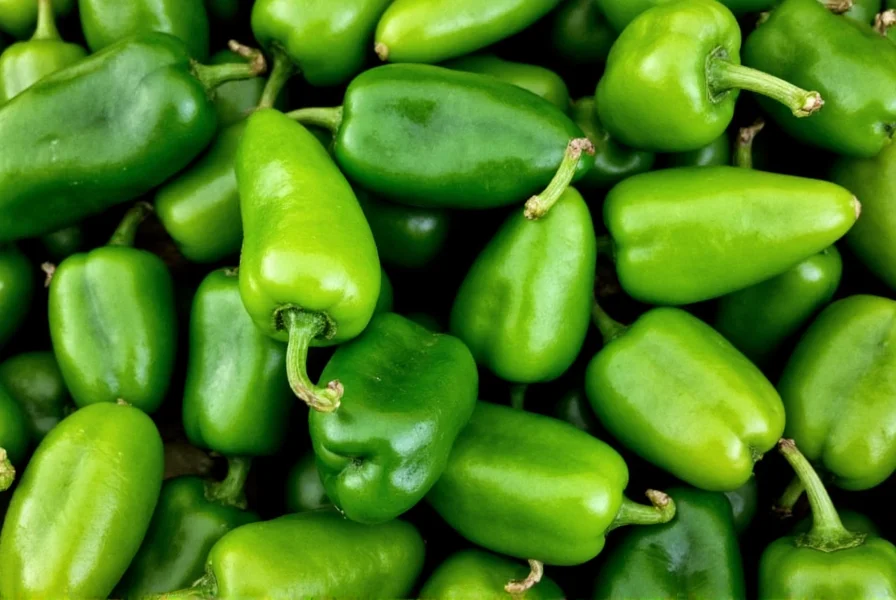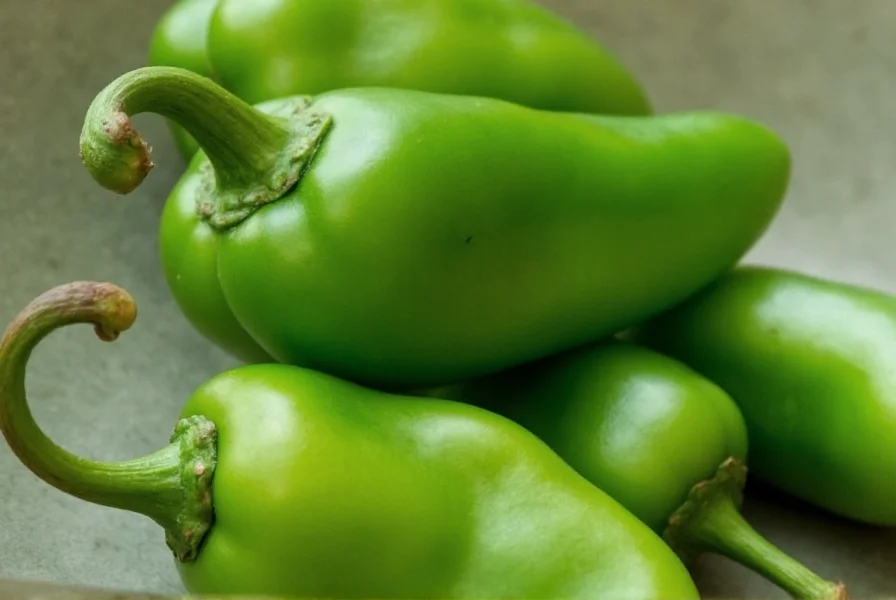Are Green Peppers Spicy? The Surprising Truth Behind the Heat!
If you've ever stood in front of a colorful pepper display at the grocery store and wondered, 'Are green peppers spicy?', you're not alone. This simple question has stumped many home cooks and spice lovers alike. Spoiler alert: the answer isn't as black and white (or green and red) as you might think.
In this post, we’ll dive into what makes peppers hot, compare green peppers to their more mature cousins like red and yellow peppers, and give you the ultimate guide on how to pick the right level of spice for your next dish. Let’s turn up the heat—literally.
Table of Contents
- The Science Behind Pepper Spice
- Are Green Peppers Spicy?
- Green vs. Red, Yellow & Orange Peppers
- What Affects Pepper Spiciness?
- Spice Tips: From Mild to Wild
- Buying Guide: Choosing Your Perfect Pepper
- Cooking with Green Peppers: Recipes & Hacks
- Conclusion
The Science Behind Pepper Spice
The spiciness of peppers comes from a compound called capsaicin. Found mostly in the seeds and inner ribs of the fruit, capsaicin binds to pain receptors in your mouth, tricking your brain into thinking it's being burned—even though no actual fire is involved.
Scientists measure spiciness using the Scoville scale, which rates how much capsaicin is present. Bell peppers (yes, even green ones) usually fall around zero Scoville Heat Units (SHU), meaning they’re mild or non-spicy. But not all green peppers are bell peppers, and that’s where things get interesting.
Capsaicin Facts:
- It’s fat-soluble, so milk or yogurt help ease the burn better than water.
- Higher capsaicin levels = more intense heat.
- Some green chilies can be hotter than fully ripe red ones.
Are Green Peppers Spicy? The Short Answer
Most green bell peppers are not spicy. They lack capsaicin, especially in the outer flesh. However, other types of green peppers, such as jalapeños, serranos, and poblanos, definitely bring the heat.
| Type of Green Pepper | Typical SHU Range | Spicy? |
|---|---|---|
| Green Bell Pepper | 0–100 SHU | No |
| Jalapeño | 2,500–8,000 SHU | Yes |
| Serrano | 10,000–23,000 SHU | Yes |
| Poblano | 1,000–2,000 SHU | Mild to Moderate |
| Hatch Green Chile | 1,000–30,000 SHU | Variety Dependent |
So when someone asks, “Are green peppers spicy?” the correct response is, “Which one?” because it all depends on the variety.
Green vs. Red, Yellow & Orange Peppers: What’s the Difference?
Green peppers are simply unripe versions of red, orange, or yellow peppers. As peppers mature, they change color and often develop more sugar, giving them a sweeter flavor profile.
| Feature | Green Pepper | Red/Yellow/Orange Pepper |
|---|---|---|
| Heat Level | Varies by type | Generally milder (but not always) |
| Flavor | Grassy, vegetal | Sweeter, fruity |
| Nutrition | Lower in vitamin C and beta-carotene | Higher in antioxidants and vitamins |
| Price | Usually cheaper | More expensive |
Fun Fact:
A red bell pepper starts its life as a green bell pepper. So technically, green peppers aren’t a different species—they’re just younger versions of the same plant!
What Factors Affect Pepper Spiciness?
You might be surprised to learn that several factors influence how spicy a green pepper can be:
- Maturity: The longer a pepper stays on the vine, the spicier it becomes.
- Climate: Hotter weather increases capsaicin production.
- Stress: Peppers grown in drought or nutrient-poor soil tend to be spicier.
- Variety: Some cultivars are bred specifically for heat, while others are bred for flavor or sweetness.
- Seed placement: Seeds and ribs contain the most capsaicin. Remove them to reduce heat.
Spice Tips: From Mild to Wild

Whether you love a little zing or want to bring the fire, here’s how to dial in your desired spice level:
For Mild Lovers:
- Stick with green bell peppers
- Remove seeds and inner membranes
- Use dairy to balance any accidental heat
For Medium Fire:
- Try poblano or Anaheim peppers
- Keep some seeds for extra kick
- Add a splash of lime or citrus to enhance flavor
For the Bold & Brave:
- Go for green serranos or Hatch chiles
- Leave the seeds and ribs in
- Pair with bold flavors like smoked paprika or chipotle
Ultimate Buying Guide: Choosing the Right Green Pepper
Shopping for peppers can feel overwhelming, but knowing what to look for will help you find the perfect match for your recipe. Here’s how to choose the best green peppers based on your needs:
Best for Fresh Eating: Green Bell Pepper
- Features: Crisp, thick skin, large size
- Advantages: Sweet and crunchy, ideal for snacking or salads
- Use Cases: Salads, wraps, stuffed peppers
- Target Audience: Kids, mild palates, veggie lovers
- Occasions: Lunches, appetizers, healthy snacks
Best for Cooking: Poblano Pepper
- Features: Dark green, slightly waxy skin, medium heat
- Advantages: Roasts beautifully, perfect for sauces and chiles rellenos
- Use Cases: Tamales, enchiladas, soups
- Target Audience: Home cooks, Mexican cuisine fans
- Occasions: Family dinners, taco nights, potlucks
Best for Heat: Serrano Pepper
- Features: Thin-walled, small size, vibrant green color
- Advantages: Adds punchy heat without bulk
- Use Cases: Salsas, sopes, tacos, hot sauces
- Target Audience: Spice enthusiasts, chili lovers
- Occasions: Game day, fiestas, backyard grilling
Best for Regional Flavor: Hatch Green Chile
- Features: Deep green, meaty texture, varying heat levels
- Advantages: Smoky flavor, versatile for roasting or pureeing
- Use Cases: Stews, egg dishes, empanadas
- Target Audience: Southwest foodies, travelers at heart
- Occasions: Brunches, holiday meals, gourmet dinners
Cooking with Green Peppers: Recipes & Hacks
Ready to put your knowledge into practice? Try these delicious ideas:
- Stuffed Green Peppers: Use bell peppers for a mild base, then stuff with seasoned rice, beans, and cheese.
- Roasted Poblano Sauce: Char and peel poblanos, blend with garlic and cream for an easy sauce.
- Spicy Salsa Verde: Blend serrano peppers, tomatillos, onion, and cilantro for a tangy, fiery dip.
- Green Chile Queso: Simmer diced Hatch green chiles into melted cheese for a rich, smoky appetizer.
- Chili Rellenos: Stuff poblano peppers with cheese, coat in egg batter, and fry until golden.
Conclusion: Are Green Peppers Spicy? It Depends!

So, are green peppers spicy? Sometimes yes, sometimes no—it really depends on the type! While green bell peppers are sweet and mild, jalapeños, serranos, and poblanos pack a punch.
Understanding the difference between varieties helps you control the heat in your kitchen. Whether you're looking for a gentle crunch or a full-blown burn, there's a green pepper out there for every palate.
So next time you see those shiny green peppers at the market, don’t hesitate—grab a few, slice them open, and decide for yourself just how spicy they really are!










 浙公网安备
33010002000092号
浙公网安备
33010002000092号 浙B2-20120091-4
浙B2-20120091-4